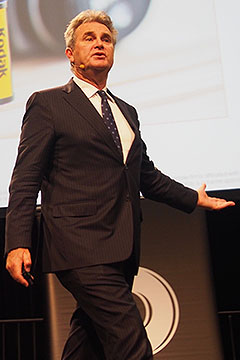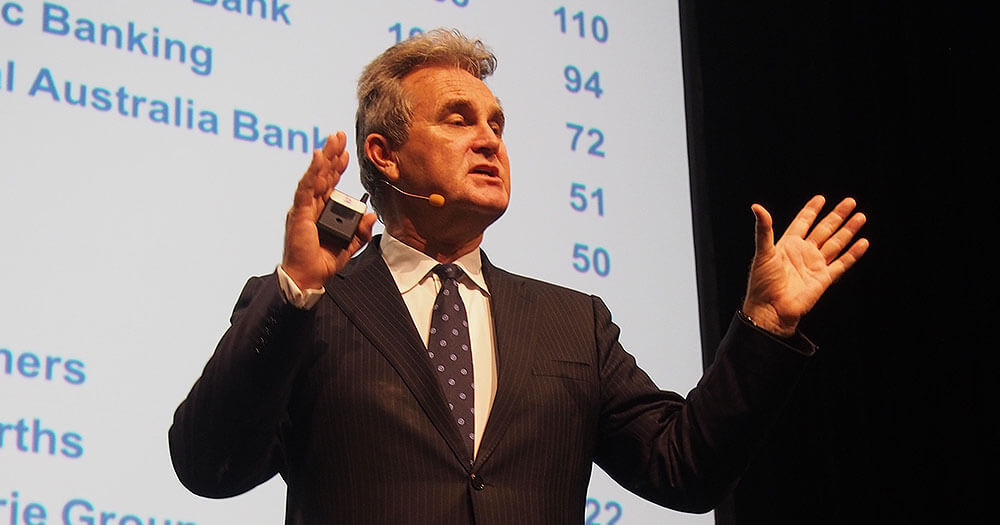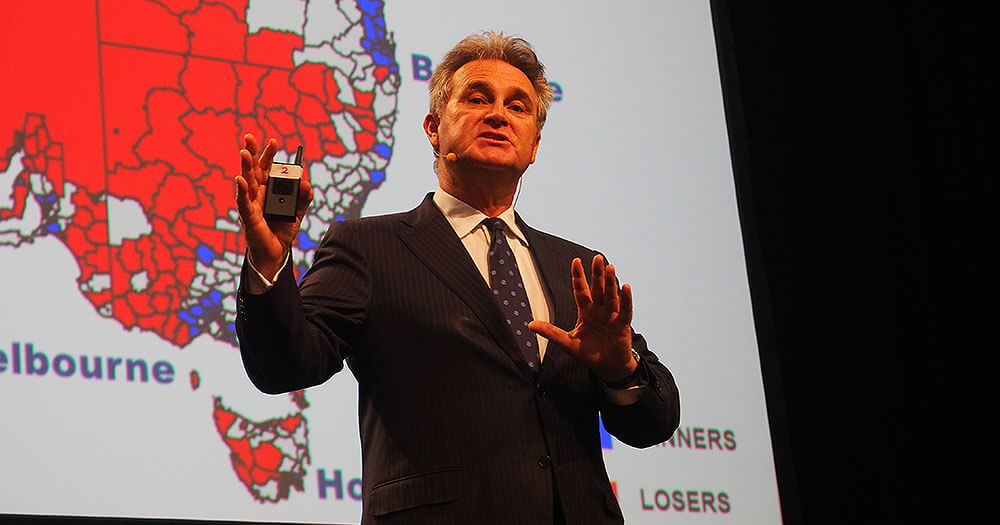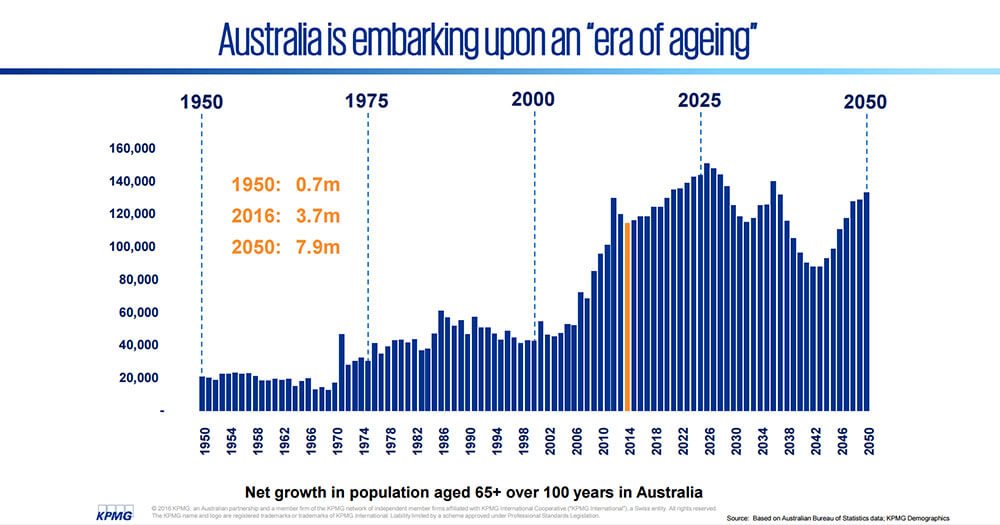
Bernard Salt
THE rapid increase in population over the past 15 years and the changing economic circumstances of whole groups of people as they age, mean car retailers need to be aware of which groups have the money, what they are spending it on and where these groups are living – or moving to.
Leading demographer, KPMG’s Bernard Salt, told dealers at the annual convention of the Australian Automotive Dealer Association that tracking the groups in the community who have spending power, and are using it, was essential if car companies and their dealers were to maintain or grow market share.
But, he said, there was one constant in what was otherwise a rapidly-evolving market: the baby boomers (the first of whom are now turning 70 years of age) have wealth and are prepared to open their wallets as their lifestyles change.
Dealers needed to focus on who has the ability to buy a car, he said.
“Who’s got the money? Who’s got a job? Who can take out a mortgage in the 21st century?”
He said a quick look at the demographic trends in the last 15 years showed which groups dealers should be aiming at.
“Between May 2000 and May 2015, the Australian economy added 3.4 m jobs. We went from eight million to 11 million workers.”
He said there were two ways to look at this growth in jobs. The first was to analyse where the new jobs were being created. The answer is health care, social assistance, construction and education: knowledge jobs.
The other way to look at it was through the age of participants.
“There’s another way you can cut this data. By looking at which age groups have shared in those 3 million jobs. Gen Y has captured 800,000 jobs in the last 15 years and Gen X has captured 800,000 jobs in the last 15 years.
“But the baby boomers have captured 1.2 million of those jobs. Which is the bigger market? Which market have you been focussed on? Which market should you be focussed on? It’s knowledge work, and it’s the 50-plus market.”
“Big picture demographics; it’s the baby boomers pushing into their late 50s and early 60s. Why is that extraordinary? They’re not retiring.
“They think: I’ve not got enough to live on in retirement. It’s not good enough for retirement in the manner to which I have become accustomed.
“I’m sticking around. I’ll remain in the workforce. I have a cash flow. I have paid off the mortgage. The kids have left home. I have discretionary spending.
“Part of that discretionary spending can be directed into a motor vehicle.”
Mr Salt said that recent strong population growth has been spread unevenly across the country.
The overall trend was for people to settle near the coast but he said Melbourne was the fastest-growing capital with an average of 92,000 people settling there each year.
He said a young dealer starting out should try to land a franchise in a fast-growing town, either within a major capital or in one of the many commuter towns outside the capitals, like Allenbrook near Perth, or Melton in Melbourne’s west or on Melbourne’s Bellarine Peninsula.
Click to enlarge – Not only are the Baby boomers the biggest population compared to Gen Y and Gen X, the Boomers have captured the lion’s share of the jobs created in the past 16 years – Source: Bernard Salt KPMG
“If I was a young man or woman, 28 or 29, putting my career on the line, taking out a mortgage to invest in a dealership, I would want to know if that town had the wherewithal to support me, not just this year and next year, but 10 years, 20 years, 30 years into the future,” he said.
Mr Salt told dealers that the structure of society had changed not just in the past 80 years, but in the past 40 years. What was true back then no longer holds today.
“Eighty years ago, in 1936, the average Australian lived for 63 years and qualified for the aged pension at 65. They tended to drop dead at work before they got the pension.”
By 1976 life expectancy was 71, and a person still retired at 65.
“You worked for 50 years, you get six years in retirement then you drop dead.”
Now the life expectancy is 82.
“That’s 17 years of retirement, although the most common age of retirement in Australia is not 65, it’s 58. That means people now have 24 years of retirement.”
The people who are retiring now are the baby boomers, born between 1945 and 1964 and aged between 52 and 70.
“Are you going to sit at home and babysit your grandchildren for 24 years? Baby-boomers will simply not do that. They’ll work on. They are working on, beyond 55, beyond 60, beyond 65. They have more consumer spending power now than ever before.
“If your mindset is that we’re going to be selling product to the people in their 20s, their 30s and their 40s, there has been a shift in the market over that time frame.
“The dealers’ acumen is to come up with the marketing, the messaging, to actually connect into an aspirational, rising cohort of baby boomers looking to reward themselves: downshifting, downsizing, trips here, trips there, Rhine River cruises, Alaskan cruises, trips around Australia. How can you actually build your product into those demographics?”
Mr Salt said the baby-boomers were being followed by two disgruntled generations, Gen X and Gen Y. He said Gen Xers were born between 1964 and the early ‘70s and seemed to be in the wrong place at the wrong time.
Click to enlarge – The econmic impact of the baby boomers will peak in 2025. Dealers need to identify where the Boomers are moving to to secure the longer term future of thier businesses – Source: Bernard Salt KPMG
“Baby boomers got fee-free tertiary education from 1972 to 1987. When did Xers go to university? From the late 1980s. In came debt. When did it go wrong? I regard the Xers as the pissed-off generation.”
Meanwhile, the baby boomer bosses were coddling the Gen Y generation (early ‘80s to late ‘90s).
“Are we paying you enough? Is anyone being mean to you Gen Y? Can I get you a pillow Gen Y? The good news for Xers is they now have their hands on the top jobs and can now wreak revenge on Gen Y.” 
Meanwhile, Mr Salt described the Gen Yers as the disappointed generation.
“This is a special generation. From the age of five they have been told they are special, by their parents, by their teachers, by their employers.
“Which is all well and good, but what happens when this special generation wakes up at the age of 35, with a marriage, a mortgage and kids and looking straight down the barrel at middle age? They wake up one day and they realise: I’m not rich, I’m not famous, I’m not a celebrity, I’ve been lied to all my life.
“And it will all be someone else’s fault, of course. How can middle age possibly live up to their expectations? It’s a disappointed generation.”
By Ian Porter















 Read More: Related articles
Read More: Related articles

